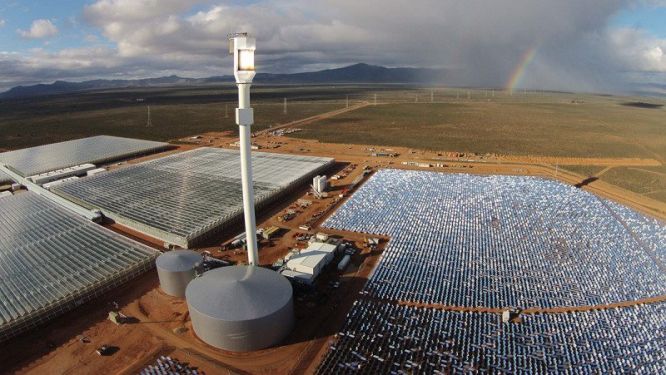
IN A TYPICALLY negative academic take on a South-Australian farm growing 180,000 tomato plants using only sun and seawater, Paul Kristiansen at the University of New England, Australia, questioned the need for energy-intensive farming in a desert, when there are ideal growing conditions in other parts of Australia.
“It’s a bit like crushing a garlic clove with a sledgehammer,” he says. “We don’t have problems growing tomatoes in Australia.”
Sunshine and seawater. That’s all a new, futuristic-looking greenhouse needs to produce 17,000 tonnes of tomatoes per year in the South Australian desert.
It’s the first agricultural system of its kind in the world and uses no soil, pesticides, fossil fuels or groundwater. As the demand for fresh water and energy continues to rise, this might be the face of farming in the future.
An international team of scientists have spent the last six years fine-tuning the design – first with a pilot greenhouse built in 2010; then with a commercial-scale facility that began construction in 2014 and was officially launched recently.
How it works
Seawater is piped 2 kilometres from the Spencer Gulf to Sundrop Farm – the 20-hectare site in the arid Port Augusta region. A solar-powered desalination plant removes the salt, creating enough fresh water to irrigate 180,000 tomato plants inside the greenhouse.
Scorching summer temperatures and dry conditions make the region unsuitable for conventional farming, but the greenhouse is lined with seawater-soaked cardboard to keep the plants cool enough to stay healthy. In winter, solar heating keeps the greenhouse warm.
There is no need for pesticides as seawater cleans and sterilises the air, and plants grow in coconut husks instead of soil.
The farm’s solar power is generated by 23,000 mirrors that reflect sunlight towards a 115-metre high receiver tower. On a sunny day, up to 39 megawatts of energy can be produced – enough to power the desalination plant and supply the greenhouse’s electricity needs.
Tomatoes produced by the greenhouse have already started being sold in Australian supermarkets.
Absolutley Brilliant , this has potential to green the interior and bring so much life to a once dry place, yes I know that is life there, but in context of making Australian human self sustainable by using smart tech and sea water is sheer evolutionary progress..